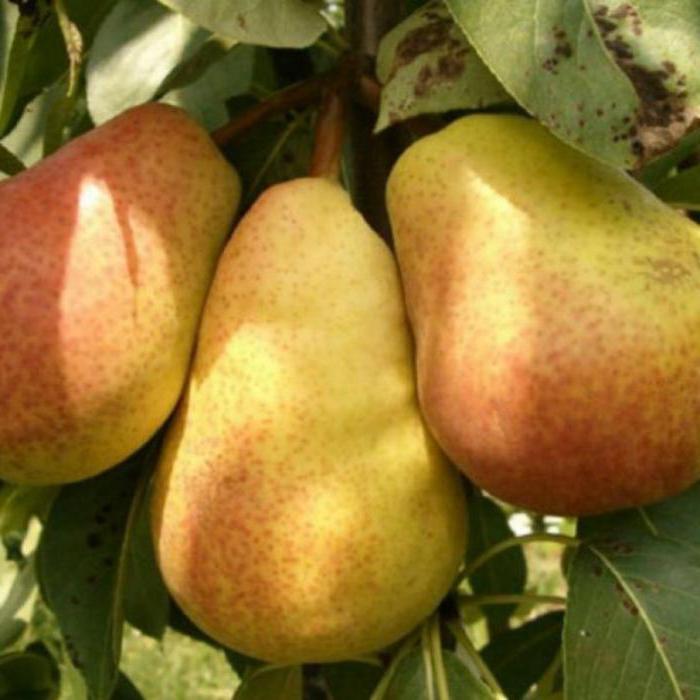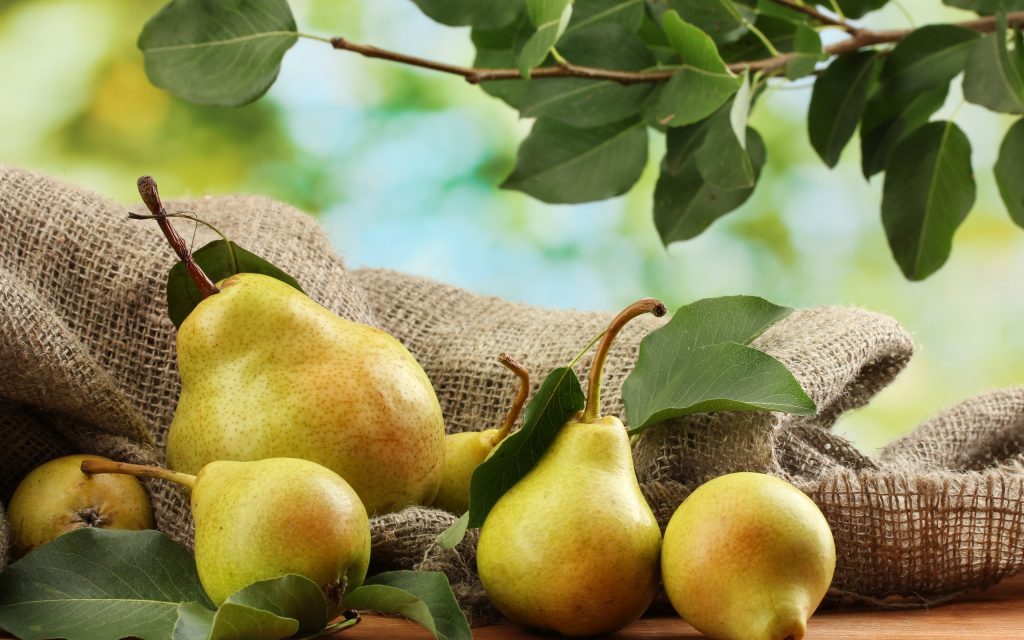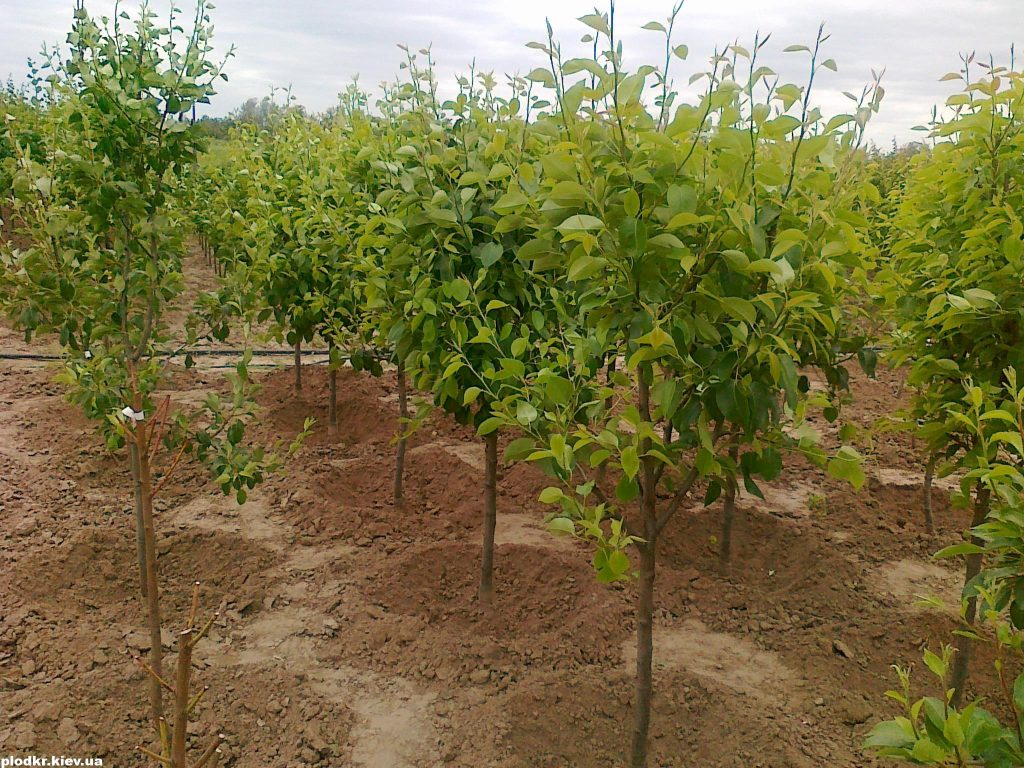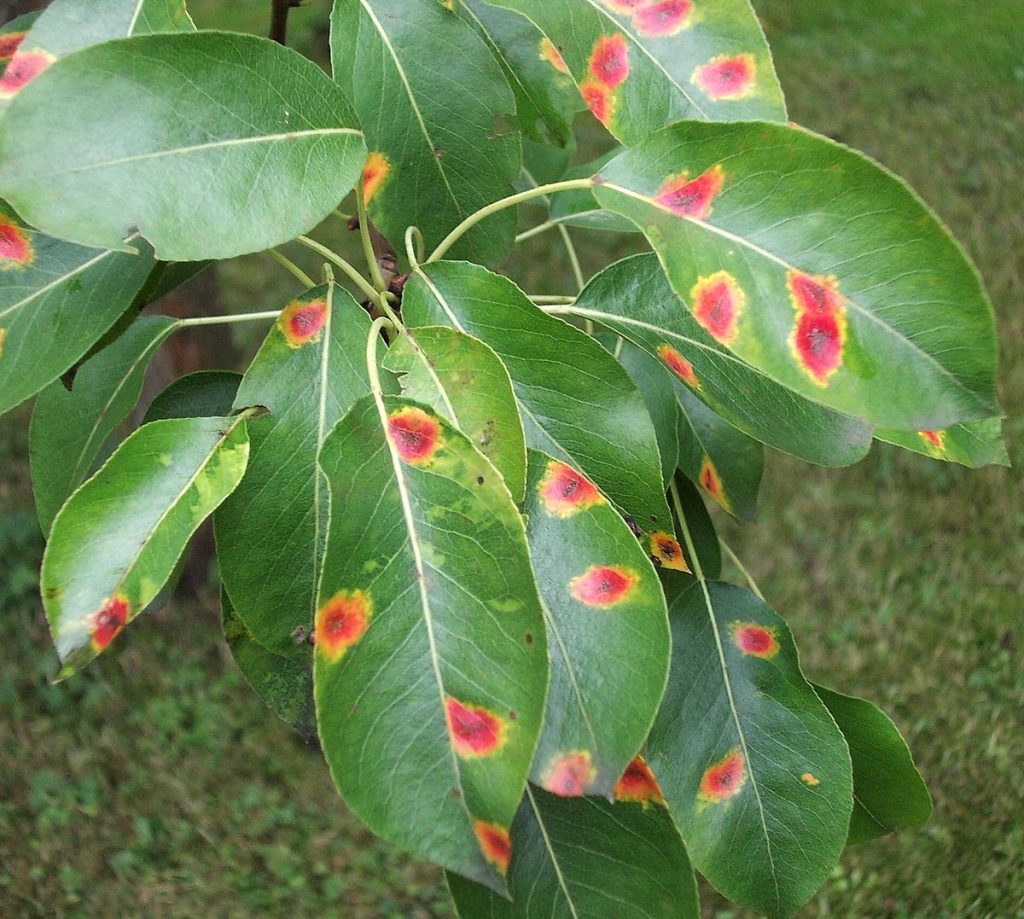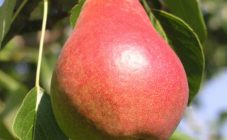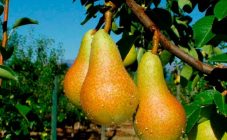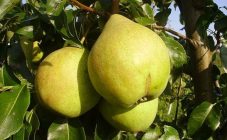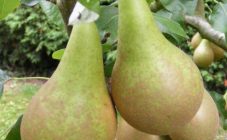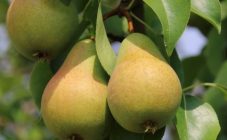New varieties of fruit plants are presented to amateur gardeners every year. The larger the assortment, the more difficult it is to make a choice, because yield and unpretentiousness are qualities that not all categories can boast of. Nowadays, varieties bred more than 15 years ago are gaining more and more popularity. These include the domestic summer pear variety Allegro, which is becoming the sales leader.
History of origin
More than 15 years ago, Russian breeders created a mid-season variety that survived in cold conditions, which was named Allegro. This is one of the few fruit trees, the cultivation of which became possible thanks to the artificial pollination of the Osennyaya Yakovleva apple tree.
The newly introduced variety was entered into the State Register in 2002, and was recommended for trial planting in the Central Black Earth Region. Since then, the tree has been actively planted in most of the country, surprising with fruits with excellent taste and universal purpose. Pear Allegro was the result of the work of scientists: Yu.K. Ilyina, S.P. Yakovleva and S.S. Yakovleva.
Description and characteristics
Allegro is considered a mid-season summer variety. Like other varieties, the tree grows medium in length, takes root quickly. Has a slightly lifeless crown and strong skeletal branches.
With the arrival of early spring, when the air warms up and the temperature becomes stable, it's time for pears to bloom. Many hobbyists worry that late frosts will damage the harvest, but flowering, like the tree itself, is immune to sharp and strong temperature jumps.
The culture is characterized by mixed fruiting. An ovary on a pear can be found on a fruit twig, a spear and on an annual shoot. This allows you to bear fruit even more abundantly. In general, the plant has a neglected drooping appearance. The first fruiting can be expected as early as 4 years after the planting is done. The culture begins to bear fruit fully by mid-August.
Usually the fruits are picked still greenish, then set aside for several weeks before they can be eaten. With this artificial ripening, the fruit acquires a yellowish color, and the pulp softens. Due to uneven ripening, the fruit season can be stretched until mid-September.
To learn more about what the Allegro pear is, a detailed description of the variety's fruits will help. Typically, fruits grow medium in size, weighing no more than 200 g. In shape, they are ordinary, pear-shaped, elongated in length. The fruit is mostly green, with a red blush at the top.
From the first fertile period, one tree is capable of producing at least 10 kg of juicy fruits. In the future, adhering to the rules of care and maintenance, you can get a yield of 12 kg. Such a stable rate is important for most medium-sized fruit plants.
After harvesting the pear harvest, it can be stored in a cool room. So the fruit can retain its attractive appearance, juiciness and useful properties for 14 days. The presence of a soft and thin skin makes pears not transportable.
The peduncle is slightly inclined, long. The seed stone is elongated. The fruit tastes sweet, without the usual pear astringency, with dense pulp. The pear is covered with a sweet, soft skin.
First of all, the fruit of the Allegro pear is intended for fresh consumption. But the hostesses also found other ways to use them. Delicious jam, preserves and even marshmallows are made from pears.Uneven ripening only contributes to this.
Planting and leaving
This pear variety is unpretentious, but there are certain rules for keeping and planting that will ensure a constant harvest:
- Lighting. Having made the decision to grow Allegro in your summer cottage, you should understand that the variety loves light. The height and fruiting of the tree, as well as the rate of ripening, depend on the correctly chosen place for planting. For this fruit variety, natural sunlight is important. It is best to place it in the west or southwest of the estate. Although the tree needs sunlight, it is important to keep it out of direct sunlight. It is better if the tree is slightly shaded for some time.
- The soil. For growing Allegro pears, loamy and black earth soils are ideal. It is important that the earth quickly absorbs water and allows air to pass through. The soil must be loosened. The root of the variety is well developed, does not like excessive moisture. It is worth taking care of the absence of underground pods in the vicinity of the landing site. The root system can reach depths of up to 7 m. The tree can be planted on light heights.
- Resistant to low temperatures. Winter hardiness is a characteristic thanks to which the variety has become a leader among gardeners. In cold regions, it was noted that trees can easily tolerate frosts down to -37 degrees. Sudden temperature drops are also easily tolerated without damage to the plant. Although, despite the immunity to cold weather, every gardener still tries to cover the trees. In the spring, you need to treat the trunk with whitewash or Bordeaux mixture to prevent sunburn.
- Drought tolerant. Variety care does not involve frequent watering. The tree is drought tolerant, which makes it more attractive for distant summer cottages. The pear can be watered 2-3 times in the spring and the same amount over the summer. In terms of quantity, one plant needs no more than 5 liters per humidification. If the season is dry, you can add a few more waterings. Proper hydration is the key to consistently high yields. You can improve the quality of the fruit through drip irrigation.
- Pollination. Allegro pear is a self-fertile plant. This means that in order to obtain crops next to this variety, you need to plant a pollinator pear. Among professionals, there is a belief that the best pollinators for Allegro are pear varieties Chizhovskaya and Avgustovskaya dew.
- Disease immunity. The pear is considered unpretentious to living conditions. The abrupt change in climate in spring and autumn does not affect the state of trees or fertility. Immunity to pear sore - scab and other fungal diseases is noted. Due to its resistance to diseases, the variety does not need constant chemical treatment, which means that pear fruits can be considered environmentally friendly, which increases interest in the product.
Benefits and cons
The Allegro variety has some planting and growing characteristics. Experienced gardeners highlight the following advantages:
- The pear produces many fruits, which allows them to be grown not only for home use, but also for commercial purposes;
- Unusual, sweet fruits with dessert taste;
- Resistance to infectious diseases of fruit trees, in particular, to scab;
- Gradual ripening of fruits, which allows you to enjoy the fruit longer;
- Cold resistance and immunity to sudden changes in temperature and climate in general.
A fairly positive variety of pears also has certain disadvantages:
- Poor keeping quality. The fruit should be eaten within a short time. For ripe fruits - within a week; if fruits are picked slightly underripe, they can be stored for 2 weeks in cool places;
- In order for the variety to bear fruit abundantly and constantly, you need to choose an accompanying pollinator for Allegro.
All this suggests that the Allegro pear is worthy of taking a place in the personal plots of gardeners who are ready to make an effort to obtain permanent fruits. This pear is a fast growing tree that grows medium in size and will not occupy too much area on the estate.
Particularly pleased with the mass of fruits, which can reach 150 g. Ripening by the end of summer will provide the whole family with useful substances during the period when the vitamin season is already over. The variety is best grown with experience, but for beginner amateurs, conditions for keeping and caring for the tree will not be difficult. The main difficulty that can arise in the process of growing a tree is finding a worthy companion. This is where advice from experienced gardeners and breeders comes in handy.
